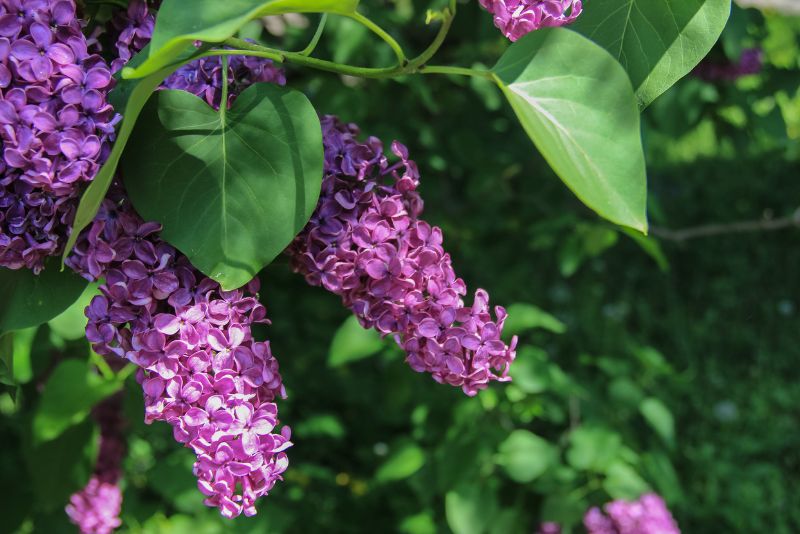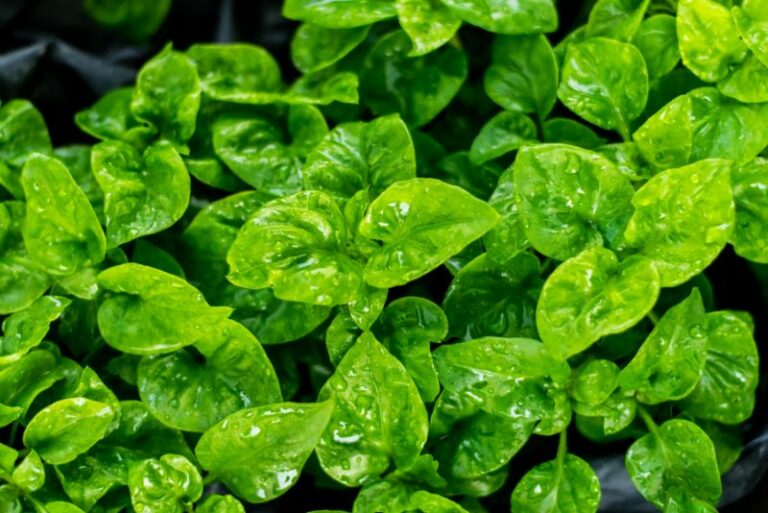Lilac Companion Plants: Enhancing Your Garden with Botanical Synergy
Companion planting has been a gardening mainstay for centuries, known for creating a symbiotic relationship among plants that can ward off pests, encourage pollination, and improve soil vitality. When considering flowering shrubs, lilacs stand out as much for their beauty as for their potential to support a thriving garden ecosystem. This comprehensive guide will walk you through the art of companion planting with lilacs, showcasing the benefits, the best companion plants to pick, and the techniques to make the most of this enriching practice.
Understanding the Essence of Companion Planting

Companion planting is not just about creating a picture-perfect garden; it’s a strategic approach to growing that benefits your plants and the environment. By choosing plants that complement each other’s growth patterns, root structures, and nutritional needs, you can create a space where flowers thrive, vegetables produce bountiful harvests, and fruits are abundant. The key is to recognize the inherent qualities of each plant and to curate a selection that supports, rather than competes, within your garden beds.
The Benefits of Lilac Companion Planting
When you sow the seeds of lilacs alongside compatible companions, you unlock a range of benefits that are as diverse as the plants themselves.
Improved Pollination
Lilacs draw in pollinators with their fragrant clusters of blooms. By coupling them with plants that flower at different times, you ensure a steady supply of bees, butterflies, and other pollinators throughout the growing season.
Pest Control
Aromatic lilac varieties repel certain insects, acting as a natural deterrent. Pair them with plants that have their own pest-resistant properties, and you’ll forge a fence against garden marauders.
Soil Enrichment
Companion plants like nitrogen-fixing legumes or nutrient-dense cover crops replenish the soil, providing lilacs with the essential elements they need for prolific flowering and vigorous growth.
Best Companions for Your Lilacs
Choosing the right companions for your lilacs is key to reaping the rewards of companion planting. Here are some top picks to promote a robust lilac garden.
Roses for Visual Harmony
Roses, with their striking and varied colors, create the perfect contrast to the lilac’s pastel palette. Both plants share similar sun and soil requirements, making them wonderful bedfellows in any garden plan.
Lavender for Aromatic Bliss
The heady scent of lavender, when mingled with the lilac’s sweet fragrance, can transform an ordinary garden into a sensory retreat. Lavender also attracts a host of beneficial insects that prey on common garden pests.
Marigolds for Pest-Free Petals
Marigolds are the superheroes of the companion planting world. They repel a vast array of pests, including nematodes, which could potentially harm the lilacs, thus improving the plant’s overall health.
Mastering Companion Planting Techniques
Once you’ve chosen your lilac companions, it’s time to plant them in ways that maximize their potential partnership. Here are some techniques to consider.
Interplanting for Maximum Diversity
Interplanting involves placing your companion plants directly next to your lilacs. This close proximity allows for seamless interaction, and it’s particularly useful for perennial flowers that are often spaced apart.
Succession Planting for Continuous Charm
With succession planting, you can ensure that there’s always something in bloom, providing both visual interest and a continuous food supply for pollinators that visit your lilacs.
Polyculture for a Natural Community
Polyculture is the practice of planting many different types of plants together to form a complex, interrelated ecosystem. When done right, it can lead to better soil health and a more balanced microclimate around your lilacs.
Real-Life Examples of Lilac Companion Success
One gardening enthusiast paired lilacs with foxgloves and saw an explosion of hummingbird activity in her garden. Another homesteader planted dianthus at the base of her lilacs and enjoyed the added benefit of their durability in a wide range of soil types.
Case Study: The Lilac and the Lily
Martha, a dedicated gardener, combined her lilacs with lilies for a stunning display of color and texture. The lilies’ tall, spiky leaves provided an interesting visual contrast to the lilac’s mounded form, and the purple of the lily blooms echoed the lilac’s hues, creating a pleasing palette.
Case Study: The Lilac and the Legume
Pete, a meticulous gardener, cultivated a vegetable patch that intertwined beans with his lilacs. The beans not only fixed nitrogen in the soil but also acted as a living trellis for the lilacs, helping them achieve their full height potential.
Conclusion
Companion planting with lilacs is an art that requires a keen eye for plant partnerships and a love for the environment. By exploring the breadth of companion plants available and experimenting with different garden designs, you can create a space that not only captures the eye but also enriches the soul. The true joy of this practice lies in its adaptability—there’s always room to grow and evolve your garden with every new season and discovery. Start small, observe closely, and be prepared for a garden that delights at every turn. Happy planting!






